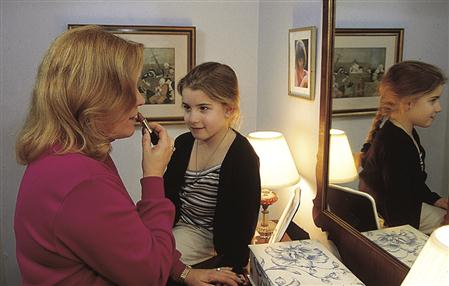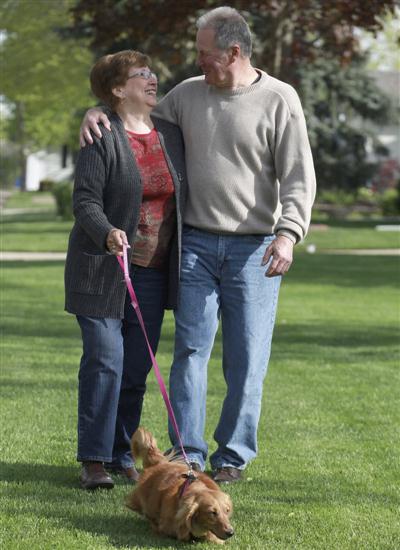Sexuality
Objectives
• Define the key terms and key abbreviations listed in this chapter.
• Describe sex, sexuality, and sexual relationships.
• Explain why sexuality is important throughout life.
• Explain how injury and illness can affect sexuality.
• Explain how aging can affect sexuality in older persons.
• Explain how the nursing team can promote sexuality.
• Explain why some persons become sexually aggressive.
• Describe how to deal with sexually aggressive persons.
Key terms
bisexual A person who is attracted to both sexes
erectile dysfunction (ED) See “impotence”
heterosexual A person who is attracted to members of the other sex
homosexual A person who is attracted to members of the same sex
impotence The inability of the male to have an erection; erectile dysfunction
sex Physical activities involving the reproductive organs; done for pleasure or to have children
transsexual A person who believes that he or she is a member of the other sex
transvestite A person who dresses and behaves like the other sex for emotional and sexual relief; cross-dresser
KEY ABBREVIATIONS
| CMS | Centers for Medicare & Medicaid Services |
| ED | Erectile dysfunction |
| OBRA | Omnibus Budget Reconciliation Act of 1987 |
Residents are viewed as whole persons. They have physical and safety needs. They also have love and belonging, self-esteem, and self-actualization needs. Their physical, emotional, social, and spiritual needs are considered.
Sexuality involves the whole person. Illness, injury, and aging can affect sexuality.
Sex and sexuality
Sex is the physical activities involving the reproductive organs (Chapter 9). It is done for pleasure or to have children. Sexuality is the physical, emotional, social, cultural, and spiritual factors that affect a person’s feelings and attitudes about his or her sex. Sexuality involves the personality and the body. It affects how a person behaves, thinks, dresses, and responds to others.
Sexuality develops when a baby’s sex is known. It is shown in names, colors, and toys. Blue is for boys and pink for girls. Dolls are for girls. Trains are for boys. By the age of 2, children know their own sex. Three-year-olds know the sex of other children. They learn male and female roles from adults (Fig. 11-1). Children learn that boys and girls each behave in certain ways.
As children grow older, interest increases about the body and how it works. Teens are more aware of sex and the body. Their bodies respond to stimulation. They engage in sexual behaviors. They kiss, embrace, pet, or have intercourse. Pregnancy and sexually transmitted diseases (Chapter 42) are great risks.
Sex has more meaning as young adults mature. Attitudes and feelings are important. Partners are selected. They decide about sex before marriage and birth control.
Sexuality is important throughout life. Attitudes and sex needs change with aging. They are affected by life events. These include divorce, death of a partner, injury, illness, and surgery.
Sexual relationships
A heterosexual is attracted to members of the other sex. Men are attracted to women. Women are attracted to men. Sexual behavior is male-female.
A homosexual is attracted to members of the same sex. Men are attracted to men. Women are attracted to women. Gay refers to homosexuality. Homosexual men are called gay men. Lesbian refers to a female homosexual. Before the 1960s and 1970s, many gay persons were secret about their sexual orientation. Now many gay persons openly express their sexual preferences and relationships.
Bisexuals are attracted to both sexes. Some have same-gender and male-female behaviors. They often marry and have children. They may seek a same-gender relationship or experience outside of marriage.
Transvestites dress and behave like the other sex for emotional and sexual relief. Commonly called cross-dressers, most are men. Often they marry and are heterosexual. They dress as men most of the time. They usually dress as women in private. Some dress completely as women. Others focus on bras and panties. The sex partner may not know about the practice. Some partners take part in cross-dressing activities. Some transvestites have same-gender friends with similar interests.
Transsexuals believe that they are members of the other sex. A male believes that he is a female in a man’s body. A female believes that she is a male in a woman’s body. They often feel “trapped” in the wrong body. Most have always had these feelings. As children they usually behave like the other sex. Many seek mental health treatment. Some have sex-change operations.
Transgender is a broad term used to describe people who express their sexuality or gender in other than the expected ways. The term also is used to describe persons who are undergoing hormone therapy or surgery for sexual reassignment (female to male; male to female).
Injury, illness, and surgery
Injury, illness, and surgery can affect sexual function. Sometimes the nervous, circulatory, and reproductive systems are involved. One or more systems may be affected. Sexual ability may change. Most chronic illnesses affect sexual function. Heart disease, stroke, diabetes, and chronic obstructive pulmonary disease are examples.
Reproductive system surgeries have physical and mental effects. Removal of the uterus, ovaries, or a breast affects women. Prostate or testes removal affects erections.
Impotence (erectile dysfunction; ED) is the inability of the male to have an erection. Diabetes, spinal cord injuries, and multiple sclerosis are causes. So are prostate problems and alcoholism. Heart and circulatory disorders, drugs, drug abuse, and psychological factors are other causes. Some drugs for high blood pressure cause ED. So do other drugs. Some drugs treat ED.
Emotional changes are common. The person may feel unclean, unwhole, unattractive, or mutilated. Attitudes may change. The person may feel unfit for closeness and love. Therefore some problems are emotional. Time and understanding are helpful. So is a caring partner. Some need counseling.
Changes in sexual function greatly impact the person. Fear, anger, worry, and depression are common. They are seen in the person’s behavior and comments. The person’s feelings are normal and expected. Follow the care plan. It has measures to help the person deal with his or her feelings.
Sexuality and older persons
Love, affection, and intimacy are needed throughout life (Fig. 11-2). Older persons love, fall in love, hold hands, and embrace. Many have intercourse.
Stay updated, free articles. Join our Telegram channel

Full access? Get Clinical Tree




